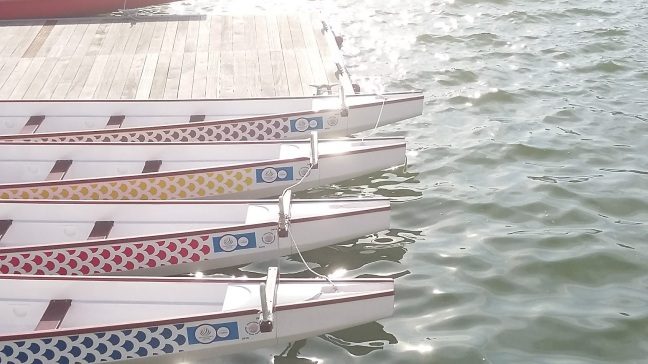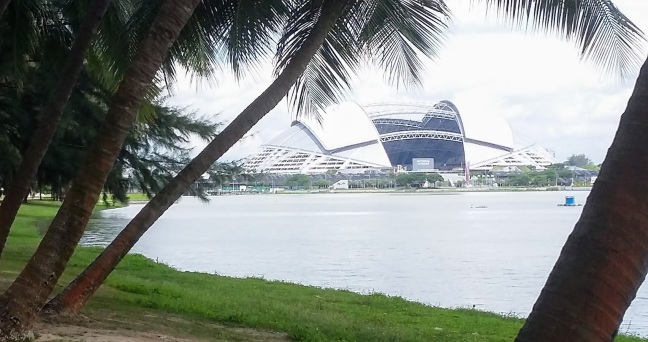Friendship. Respect. Excellence. These core values of the Olympic Games suggest that sportsmanship has the potential to bring out the best in people and bring together diverse communities across walks of life. Ideally, sports is a means to better lives- lives that are healthier, more inspiring and equitable. But what about environmental sustainability?
Until recently, the impact of sports on the environment has mostly been ignored. Natural spaces are cleared to make way for sports stadium, fields, tracks and- among the most notorious- golf courses. Not to mention the amount of resources, including water, needed to maintain these facilities. Large sports events can be highly energy-intensive and pollutive. From sports equipment to team merchandise, huge amounts of waste are generated by participants and spectators alike.

In car racing, the cars most likely to win the race are the same cars that produce the most greenhouse gases. Once all the spectacle and fun have ceased, what is left behind for local communities is neither healthy nor inspiring, and certainly not equitable.
But the relationship between sports and the environment has not been purely antagonistic. Engaging in outdoor sports such as kayaking, diving and tracking may well be the most practical and attractive way to get people acquainted with wildlife and their natural habitat. This is what Nature Society Singapore believes in, which motivates the organisation to conduct kayaking trips across the mangrove of Pulau Ubin every few months. Tracking through the Bukit Timah Nature Reserve is also popular with athletes and people who simply want to maintain their fitness in a setting that is both conducive and alive. It is through these sports that some gain the appreciation for nature and realise the value of its conservation. At the same time, the immersion allows them the opportunity to witness the degradation taking place in these shared spaces over time, because of littering for example, and be reminded of their own responsibility to contribute towards environmental action.

It goes without saying that some sports have lower impact negative impact than others. But it remains essential to reduce these impacts as far as possible. For example, diving in the Sister’s Island Marine Park is only allowed for experienced divers with the intention to do research on the coral reef ecosystem. Indoor sports can be made more sustainable by designing the facilities to be more energy-efficient. The Singapore Indoor Stadium, for example, uses a cooling system that delivers pockets of cooled air to every seat in the stadium whilst significantly reducing energy use compared to a conventional overhead system.

Using less disposables during sports events is also important. On 30 April 2017, Income Eco Run was organised with the goal of waste minimization in mind by replacing disposable cups with refillable bottle, doing without finisher t-shirt and medals for ‘Zero Waste Runners’.
Beyond reducing detrimental effects of sports on the environment, events such as the Income Eco Run suggest that sports can have an indirect positive impact on the sustainability movement as well. Because of the ability of sports to bring people together, it can be used to raise awareness of environmental causes. In ‘Run Wild It Lasts’, a fundraising initiative by Kyle Lek in collaboration with WWF, sports was put to use exactly for this purpose- to raise awareness of wildlife and start a conversation about our roles as stewards of the environment. Kyle ran more than 3,650 km in a year and for every kilometer he ran, he pledged to donate S$1 to habitat and wildlife conservation.
Is this initiative a good representation of sports for –instead of against- the environment? ‘This is only the tip of the iceberg’, says Kyle. The awareness raised within groups of individuals and the impact of ‘eco-friendly’ sports may not be able sufficient to offset the degradation that other forms of sports have already caused and are still causing today. Perhaps some forms of sports or some types of sporting events can be organised at a smaller scale or we can do without them altogether. The point is sports should not be an end, because this is the mindset that justifies sacrificing the environment and the people living in it for the sake of sports. Rather, sports must remain a means for health, self-realisation, partnership, unity and even sustainable development. Otherwise, there can be no winners.
Relevant links
- Nature Society Singapore: https://www.nss.org.sg/
- Income Eco Run: http://incomeecorun.sg/
- Run Wild It Lasts: https://www.facebook.com/RunWildItLasts/

